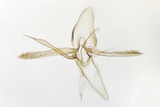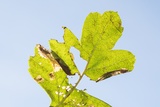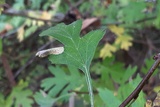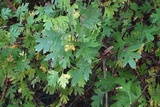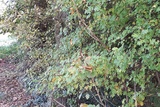Phyllonorycter oxyacanthae (Frey, 1856) Species
Last modified: Dec. 14, 2024, 4:27 p.m.
A common species wherever hawthorn is to be found throughout Belgium.
Details
- Classification
- Family: Gracillariidae > Subfamily: Lithocolletinae > Genus: Phyllonorycter > Species: Phyllonorycter oxyacanthae
- Vernacular names
- Meidoornvouwmot (NL), Common thorn midget (EN), Weißdorn-Faltenminiermotte (DE)
- First mention in Belgium
- De Crombrugghe G. 1898. Note sur quelques Lépidoptères nouveaux pour la faune belge. — Annales de la Société Entomologique de Belgique 42: 34–38. On page 37. view page
- Status
-
Native
Distribution
Imago
Head brown, mixed with white hairs; forewing ground colour brown; white pattern consisting of a basal line, sometimes finely edged with dark brown scales; a patch of whitish scales near the basis at the dorsum; four costal and three dorsal striae; a patch of dark brown scales in the apical area.
Museum specimens
No pictures yet!Specimens in nature
No pictures yet!Mine
A small, tentiform mine on the underside of a leaf, most of the time at the margin of a leaf lobe; underside yellowish green with some longitudinal folds. Later on, the mine becomes much contorted, sometimes even folding the leaf margin over the mine. Visible from the upper side is a long, brown patch. The frass is concentrated in the corner of the mine.
See also gracillariidae.net and bladmineerders.be.
Cocoon/pupa
The caterpillars of the summer generation do not construct a real cocoon, but just some flimsy spinning; those of the autumn generation construct a strong, yellowish-brown cocoon. Pupa brown.
Bionomics
Pupation inside the tough cocoon, within the fallen leaves between leaf litter on the ground. The species hibernated in the pupal stage. After the emergence of the adult, the pupal skin protrudes from the mine.
Flight periods
The adults fly in two generations a year in May and August–September.
Observed on
- Host plant (species):
- Crataegus monogyna and Crataegus laevigata
- Host plant (genera):
- Crataegus
The larva lives mainly on Crataegus, but can occasionally be found on other Rosaceae, like Pyracantha, Cydonia vulgaris and Pyrus communis.
